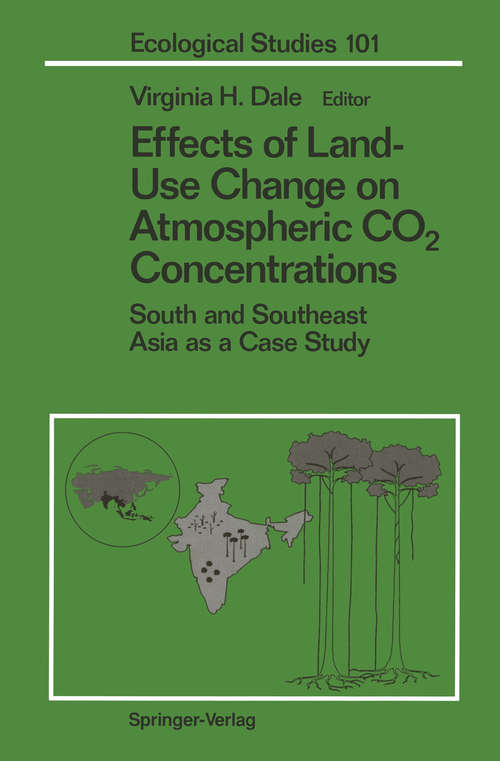Effects of Land-Use Change on Atmospheric CO2 Concentrations: South and Southeast Asia as a Case Study (1994) (Ecological Studies #101)
By:
Sign Up Now!
Already a Member? Log In
You must be logged into UK education collection to access this title.
Learn about membership options,
or view our freely available titles.
- Synopsis
- Roger C. Dahlman Environmental Sciences Division U.S. Department of Energy Washington, D.C. The potential for humans to alter Earth's atmosphere has been recognized since the end of the 19th century when Arrhenius estimated that a doubling of atmospheric carbon dioxide could alter the atmospheric radiation balance and raise average global temperature. Today, atmospheric CO concentrations play an important part in the 2 climate-change debate. Sources and sinks of CO associated with land use can be 2 significant determinants of the rate and magnitude of atmospheric CO change. 2 Combustion of fossil fuels and the deforestation associated with land-use change both contribute CO to the atmosphere; in contrast, biological processes on land create 2 potential sinks for the excess CO . Thus, land-use change and associated biological 2 processes become important elements in assessments of future atmospheric CO 2 increase; land-cover properties also affect the Earth's albedo, which is a climate feedback.
- Copyright:
- 1994
Book Details
- Book Quality:
- Publisher Quality
- ISBN-13:
- 9781461383635
- Related ISBNs:
- 9780387941172
- Publisher:
- Springer New York
- Date of Addition:
- 12/27/20
- Copyrighted By:
- N/A
- Adult content:
- No
- Language:
- English
- Has Image Descriptions:
- No
- Categories:
- Nonfiction, Science, Outdoors and Nature, Technology, Earth Sciences
- Submitted By:
- Bookshare Staff
- Usage Restrictions:
- This is a copyrighted book.
- Edited by:
- Virginia H. Dale
Reviews
Other Books
- by Virginia H. Dale
- in Nonfiction
- in Science
- in Outdoors and Nature
- in Technology
- in Earth Sciences
